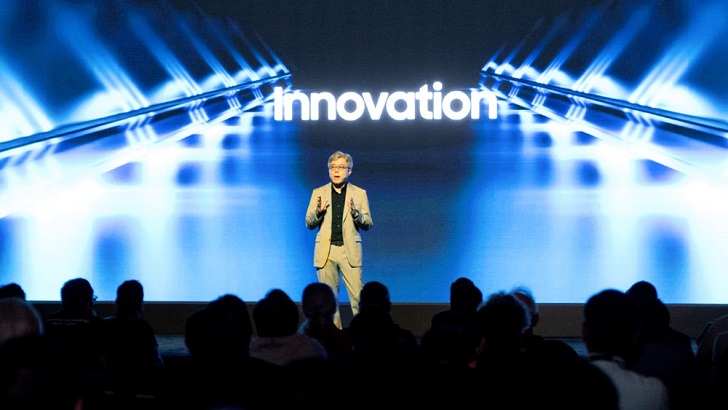Boab
I wish I could paint like Vincent
Like green Yoda we doWe like the green Yoda
Like green Yoda we doWe like the green Yoda
Socionext isn't a partner, but on a more positive note our website shows a couple of new names: CVEDIA and Quantum Ventura.Very nice @miaeffect ... and the possibilities and applications are endless with our 'partner Socionext'
View attachment 38981
Socionext isn't a partner, but on a more positive note our website shows a couple of new names: CVEDIA and Quantum Ventura.
Thanks Damo ...yep a bit confusing? this is from their website .......It's actually a little confusing (or perhaps deliberately obscure) what the true relationship is.
I think we are both a 'customer" of sorts, but also a partner, the ecosystem way similar to Arm and IFS.
BrainChip Receives Akida Chips from Socionext America
"The chips were manufactured at Taiwan Semiconductor Manufacturing Company (TSMC) from a production mask set provided in May 2021. This mask set follows the successful production of engineering samples from the Company’s Multi-Project Wafers (MPW), received in August of 2020, and the subsequent delivery of evaluation boards."
"[Socionext America] supported all assembly and test operations for the Akida devices, including a review of the TSMC Process Control Monitoring (PCM) data, assembly, device electrical testing, and simulation correlation."
BrainChip and Socionext Provide a New Low-Power Artificial Intelligence Platform for AI Edge Applications
"Socionext Inc., a leader in advanced SoC solutions for video and imaging systems, will offer customers an Artificial Intelligence Platform that includes the Akida SoC, an ultra-low power high performance AI technology."
It's actually a little confusing (or perhaps deliberately obscure) what the true relationship is.
I think we are both a 'customer" of sorts, but also a partner, the ecosystem way similar to Arm and IFS.
BrainChip Receives Akida Chips from Socionext America
"The chips were manufactured at Taiwan Semiconductor Manufacturing Company (TSMC) from a production mask set provided in May 2021. This mask set follows the successful production of engineering samples from the Company’s Multi-Project Wafers (MPW), received in August of 2020, and the subsequent delivery of evaluation boards."
"[Socionext America] supported all assembly and test operations for the Akida devices, including a review of the TSMC Process Control Monitoring (PCM) data, assembly, device electrical testing, and simulation correlation."
BrainChip and Socionext Provide a New Low-Power Artificial Intelligence Platform for AI Edge Applications
"Socionext Inc., a leader in advanced SoC solutions for video and imaging systems, will offer customers an Artificial Intelligence Platform that includes the Akida SoC, an ultra-low power high performance AI technology."
This isn’t Akida but a great example of beneficial AI where Akida would be a great fit!
Quite amazing; flying a drone only with your brain signals.
https://www.linkedin.com/posts/varj...4-SnZq?utm_source=share&utm_medium=member_ios

I have formed the opinion that BrainChip is content atm to just leave things pretty much on the downlow.It's actually a little confusing (or perhaps deliberately obscure) what the true relationship is.
I think we are both a 'customer" of sorts, but also a partner, the ecosystem way similar to Arm and IFS.
BrainChip Receives Akida Chips from Socionext America
"The chips were manufactured at Taiwan Semiconductor Manufacturing Company (TSMC) from a production mask set provided in May 2021. This mask set follows the successful production of engineering samples from the Company’s Multi-Project Wafers (MPW), received in August of 2020, and the subsequent delivery of evaluation boards."
"[Socionext America] supported all assembly and test operations for the Akida devices, including a review of the TSMC Process Control Monitoring (PCM) data, assembly, device electrical testing, and simulation correlation."
BrainChip and Socionext Provide a New Low-Power Artificial Intelligence Platform for AI Edge Applications
"Socionext Inc., a leader in advanced SoC solutions for video and imaging systems, will offer customers an Artificial Intelligence Platform that includes the Akida SoC, an ultra-low power high performance AI technology."


Lots of competition out there. Hopefully we can maintain our lead that they say we have.Ready for a breakthrough in semiconductor technology? Samsung Electronics has just unveiled their groundbreaking AI-focused foundry vision that'll revolutionize the chip industry at their event today. Here's a quick break down of the big news:
• Transaction-level Machine Learning (TLML) technology, a far-reaching neural network-based machine learning technology designed to unleash the full potential of high-performance, low-power applications.
• TRANSISTOR-AIDED DESIGN (TAD), allowing designers to automatically customize components on the transistor level to speed up chip development processes.
• Na FLOW, a software package designed to significantly reduce the amount of time and effort it takes to design and manufacture semiconductors.

Samsung Electronics Unveils Foundry Vision in the AI Era at Samsung Foundry Forum 2023
Samsung further solidifies foundry leadership and customer commitment with advanced process roadmapnews.samsung.com

